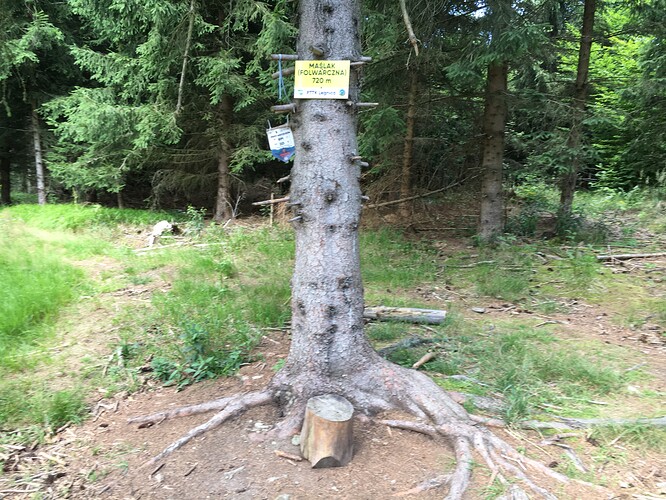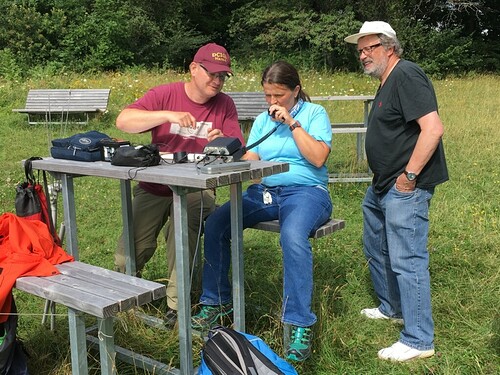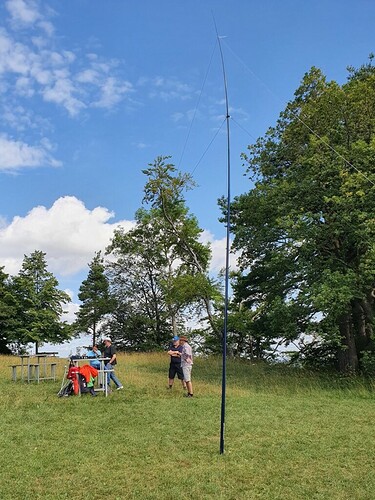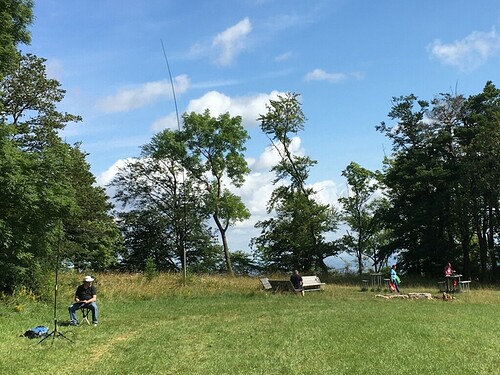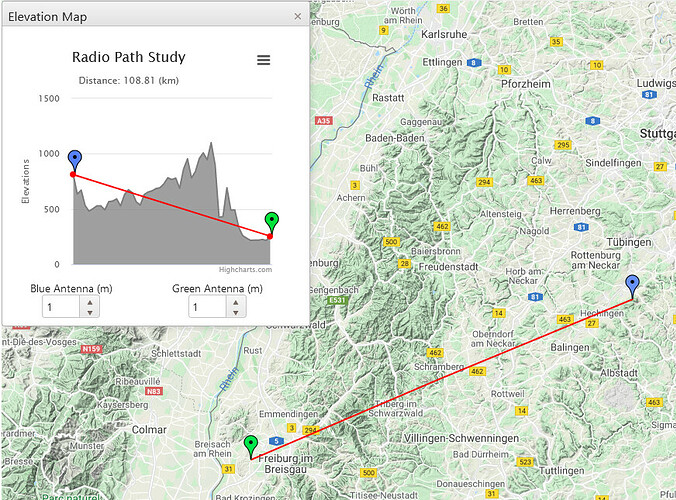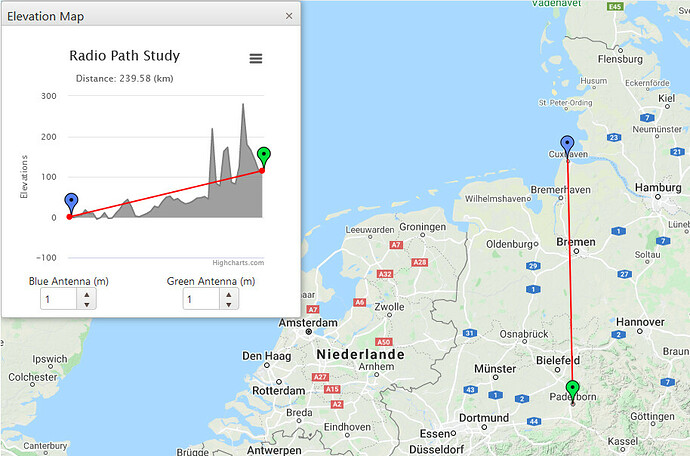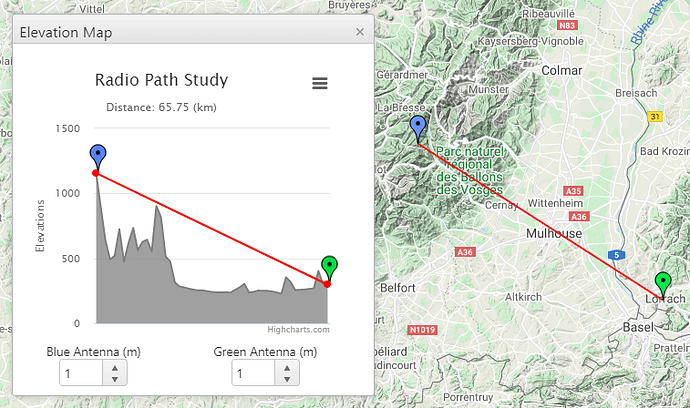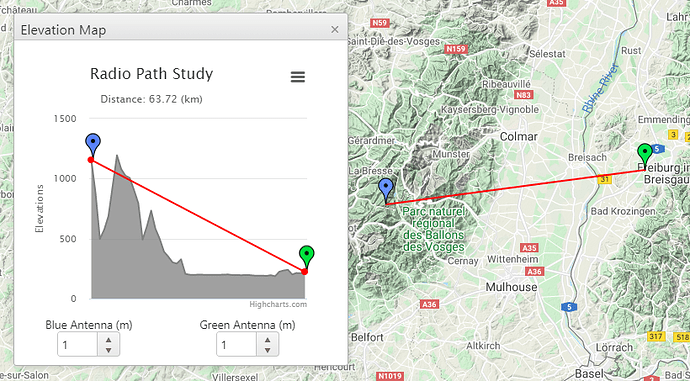Thanks Markus, Jarek and all other chasers/ activators for the numerous QSOs! It was great fun 
Six members of the local radio club Tuebingen (DOK P12) participated in this joint activation of DM/BW-089 which is our local summit.
If you haven’t seen it before, here is a fantastic aerial view of Farrenberg.
The weather forecast for Saturday was perfect: Sunny with few clouds and low winds.
When we reached the summit at about 8:30 utc, it was completely deserted. Within the next half hour we set up five stations so everyone had a fair chance to get on the air for an extended period of time.
The first QSO was on 20m CW followed by 15m SSB which - to our great pleasure - was open to Western EU.
It didn’t take long until the first S2S-QSOs with our friends DO1TBE and DG1PSI on nearby DM/BW-110 went into the log (on 15m SSB ground wave with strong signals)
More QSOs on 15m and 20m followed and while the last technical issues were solved (an ATU which wouldn’t tune properly), I activated on 40m CW. Then it was already time for lunch break.
Various aspects of SOTA were discussed during the meal before we proceeded with the activation, now on 20m SSB, 17m CW and 60m SSB & CW. Again we were surprised by the number of callers, especially the ones who waited their turn patiently or called in more than once to give every activator the chance of a successful activation.
Finally, while the first teams were already taking down their stations, DC1SAF remembered to activate on 30m CW. This way we performed a full activation on all bands from 60 to 15 metres 
Once everything was dismantled and packed up, we made our way back home, where we ended the day discussing what we had experienced over coffee and some delicious cake in the garden of one of our members.
Conclusion:
With so many different stations set up, everyone had a chance to see the features/ performance of the various transceivers and antennas (QCX, home brew, mcHF, Xiegu G90, FT-817, KX3, MTR-3B // short vertical MP-1, random wire, centre-fed and end-fed dipoles with Un-Uns and L-Tuner)
For some team members it was their first SOTA activation and they liked it. Some members already had some experience and were able to add new impressions.
There were definitely lots of opportunities to learn new stuff and hence this event may be repeated in the future 
Thanks again to all chasers for the QSOs and hope to cu from the next one!
Roman




